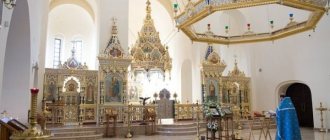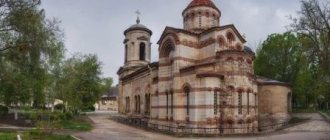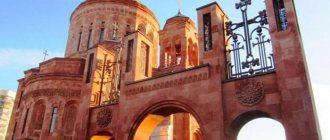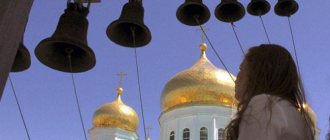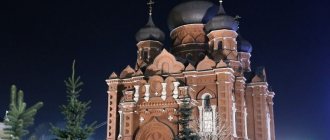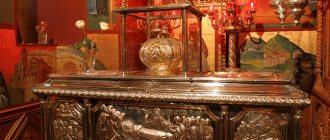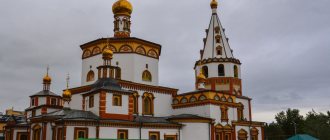Address: Yervand Kochar St, Yerevan. Phone: (+374-10) 54-33-32. How to get there: by bus going to the “Zoravar Andranik” stop. Christianity was adopted in Armenia much earlier than other regions of Europe. In the 4th century AD, the first temples began to appear in this mountainous country, usually concentrated in Yerevan, the capital of the state. As throughout Armenia, here they have become an integral part of architecture, nature and the mountain landscape, therefore modern buildings erected in the country must complement the ancient ones, without breaking out of their architectural style. The formation of the local direction of architecture was influenced by the Byzantine Empire, which is why most of the temples are made in the classical Romanesque style, which is characterized by minimalism and simplicity. Modern architects and engineers working on the Cathedral of St. Gregory the Illuminator worked in the same style.
History of the cathedral
The construction of the temple complex was consecrated by Catholicos of Armenia Karekin I in 1997. It ended in 2001 on the 1700th anniversary of the recognition of the Christian religion in the state. At the moment, the Cathedral of St. Gregory the Illuminator is one of the most significant buildings in the capital. It contains relics associated with his name and kept for five centuries in one of the monasteries of Naples. They were transferred to the cathedral after its consecration.
This event occurred in September 2001. The ceremony was conducted by Patriarch Alexy II. It was attended by the head of the Apostolic Armenian Church, Catholicos Karekin II, representatives of various religious denominations, as well as the President of the Republic Robert Kocharyan. A week after the cathedral was consecrated, the Pope held a service there. More than 30 thousand people gathered to listen to him.
Cathedral of St. Gregory the Illuminator
Yerevan has a huge number of attractions; modern architectural buildings, which are not inferior to the most ancient monuments in originality and beauty, deserve special attention.
Konstantin Malanchev
Cathedral of St. Gregory the Illuminator in Yerevan
The Cathedral of St. Gregory the Illuminator is the largest Orthodox cathedral, which is the property of the city of Yerevan. It is located in Transcaucasia, in the central part of the capital, in a colorful city park. Its construction began in 1997 with the blessing of the Armenian Patriarch Karekin the First. The cathedral was built thanks to charity and sponsorship funds. It was designed by one of the best Armenian architects, Stepan Kyurkchyan. And the name is given in honor of the clergyman of the highest degree of priesthood, Grigor Lusavorich. In 2001, the temple was consecrated, and today it is open to everyone. The Gregoras were kept in Naples for half a million years, and only in 2001 they were handed over to the Catholics of the entire Armenian people. Now the place of their storage has become the Cathedral of St. Gregory the Illuminator.
Description of the Cathedral
Usually the sanctuaries have round domes, gilded crosses and rounded shapes. At the beginning of the 18th century, the architectural complex became a symbol of Christianity in Armenia. It consists of the cathedral itself and two churches - His Holiness Tiridates and His Holiness Queen Ashkhen. They didn’t just name it - Tridat and Ashkhen are associates of Bishop Gregory.
The Cathedral of St. Gregory the Illuminator externally resembles a Palace building, and is fundamentally different from Orthodox churches: geometric shapes, strict outlines, restrained color palette. The area of the cathedral is 3822 square meters, its territory can accommodate 1700 believers. The height of the landmark is 54 meters - in Armenia, this sanctuary is the highest, on its sides there is a stone wall, along the perimeter there is a “Peace Park”. To reach the cathedral, you need to walk along a long rocky alley.
The inside of the consecrated building is spacious and bright; already at the entrance, visitors note the lack of painting, a small number of icons, the walls and ceilings have triangular-shaped recesses and arches, and oblong window openings, which is typical of Armenian church traditions. The windows are decorated in the form of a unique mosaic, and an iconostasis is located in the central part of the temple.
Travelers and pilgrims from all over the world come to venerate the relics of His Holiness. The Cathedral of Gregory the Illuminator is a popular sanctuary, the center of culture and spirituality of Armenia. Anyone can visit the holy place on their own. But if you want to get the most interesting and reliable information, then order the services of a guide or purchase a ticket for an excursion.
The life of a famous educator
Gregory was born in 252 into the family of the Parathian Anak. At the instigation of the Persian king, Anak killed Khusrow, the ruler of Armenia. For this act, he and his family members were executed. The nurse managed to hide her youngest son and take him to his homeland in Caesarea. When the boy grew up, he was baptized, and he went to Rome to serve Tiridates, the son of the ruler Khosrow, in order to atone for his father’s crime.
Tiridates' homeland was Armenia. Yerevan became the city to which he returned in 287 with the goal of regaining his father's throne. After that, he imprisoned Gregory in a dungeon, where he spent almost 13 years. When he was released, he took up educational activities and cured Tiridates of a serious illness. In 301, the king was baptized and declared Christianity the state religion of Armenia.
In 302, the enlightener Gregory was consecrated to the rank of bishop. After that, he built the Etchmiadzin Temple in honor of Jesus Christ in Vagharshapag. For the rest of his life he preached Christianity in Armenia and Georgia. In 325 he was invited to the First Ecumenical Council in Nika, but he sent his son to it. After his return, Gregory handed over the department to him, and he himself lived as a hermit until his death.
Notes
- Archived October 2, 2011.
- ↑ 12
Louise Simone and Richard Manougian Donate $2 Million to Yerevan Cathedral Project - https://w2.vatican.va/content/john-paul-ii/en/homilies/2001/documents/hf_jp-ii_hom_20010926_yerevan-st-gregory.html APOSTOLIC VOYAGE IN ARMENIA, ECUMENICAL CELEBRATION, HOMILY OF JOHN PAUL II. Cathedral of St. Gregory the Illuminator, Yerevan, 26 September 2001
- The visit of His Holiness Patriarch of Moscow and All Rus' Alexy II to Armenia took place // mospat.ru
- Yerevan churches (unspecified)
(inaccessible link). Official Website of the Yerevan Council. Access date: August 24, 2009. Archived October 2, 2011.
Architectural solution
The Cathedral of St. Gregory the Illuminator was built according to the plan of the architect Stepan Kyurkchyan. The construction was carried out through donations from respected families of Armenia. The temple was built in a strict ascetic style, characteristic of Armenian religious buildings. The building has angular shapes. It is decorated with niches, triangular arches and elongated windows with stained glass.
The temple complex includes the cathedral, the Church of St. Tiridates and the Church of Queen Ashkhen. Each of them accommodates 150 people. Their name is no coincidence. After Christianity became the official religion of Armenia, King Tiridates III, together with Queen Ashkhen, helped St. Gregory spread the faith throughout the state.
A plot of 3822 sq.m. has been allocated for the temple complex. meters. There are only three domes with strict crosses on the cathedral building. Next to the cathedral there are bell towers. The distance from the top of the highest cross to the ground is 54 meters. The cathedral is clearly visible from different parts of the city.
Features of construction
The famous Armenian architect S. Kurkchyan, who created the church complex of the Gregorian Cathedral, worked on the project. It included three temples - the Central and two chapels of King Tiridates III and Queen Ashkhen, recognized as a saint. It was this reigning couple that actively contributed to the baptism of the entire population of the ancient Armenian kingdom. Around the same time, Gregory the Illuminator stayed and worked here, collaborating with the rulers of the state. In memory of them, the architect built two separate chapels, designed for 150 seats. The area occupied by the building is more than 3800 square meters. m with a height from the surface of the earth to the top of the cross of 54 m. Because of this, the building became visible from different parts of the city. According to the plan, all lines and shapes were made geometrically correct - in order to achieve the rigor and consistency of the building. To maintain the external style, restrained colors were selected, which makes the cathedral unique and contrasting. In the middle, on the contrary, there is a lot of light and space, making the whole space seem very large. Interestingly, there are no paintings on the walls, as was the case in many other Byzantine churches. Among the decorations, there are only a few icons and stained glass windows on the windows; a carved iconostasis is placed in the central part. The walls and ceiling are carved with niches and arched openings, perfectly combined with Romanesque windows. They are oblong in shape and very narrow. Benches were placed throughout the cathedral, of which there were exactly 1,700. All this hinted at the connection of the temple complex with the long-standing traditions of Christianity in Armenia. A rather long alley lined with stone leads to the doors. The outer wall is made from it, which surrounds the entire perimeter of the structure.
Relics of the cathedral
Before the official opening and consecration, the Catholicos of Armenia was actively involved in returning to his homeland the relics of St. Gregory the Illuminator, who did a lot to spread and establish religion, and is therefore revered as the patron saint of the state. For more than 500 years they were kept in Naples, Italy, and with the assistance of John Paul II they were transferred to their homeland. In this regard, in the early 2000s. The Pope visited the temple. Many pilgrims who come to the country specifically for this purpose dream of venerating the saint’s relics. Some believers decide to attend a religious procession, while others visit the church as part of sightseeing or thematic excursions.
The construction of the Cathedral became a landmark event for Yerevan and the country. For the local population, this temple is a symbol of the revival of the people, their spiritual culture, the preservation of faith and history, but for tourists it is a unique attraction that deserves attention!
Interior of the cathedral
The interior decoration of the temple corresponds to the style accepted in church architecture of Armenia. The Cathedral of St. Gregory the Illuminator seats 1,700 people. The room is very spacious and has benches for parishioners. The number of places was not chosen by chance; it is tied to the anniversary of the establishment of Christianity in Armenia.
There is a lot of light in the temple. The iconostasis of the cathedral looks very modest. It is decorated with a small number of icons depicting saints. There are no artistic paintings or frescoes on the walls of the building. Despite this, the room looks majestic. The dome of the cathedral is decorated with a large chandelier. In the room, in a special reliquary, the shrines of the Christian Armenian Church are kept: particles of the relics of Gregory the Illuminator and some other relics associated with his name.
Russian Orthodox Church
On the evening of March 17, 2010, in the Cathedral in Yerevan, the Supreme Patriarch and Catholicos of All Armenians Karekin II presented His Holiness Patriarch of Moscow and All Rus' Kirill with the highest award of the Armenian Apostolic Church - the Order of St. Gregory the Illuminator. Then the Primate of the Russian Church addressed those gathered with a speech.
Your Holiness!
Your Excellency, Mr. President!
Your Eminences and Graces! All-honorable fathers! Dear brothers and sisters!
Let me express my deep gratitude for presenting me with the highest award of the Armenian Apostolic Church - the Order of Gregory the Illuminator. Receiving it from the hands of Your Holiness, I regard it as a sign of the brotherly love of the believing Armenian people for the believing people of the Russian Orthodox Church.
The Armenian Church is one of the oldest in the world. We hear about the territory of historical Armenia already on the first pages of the Holy Scriptures: “the country of Ararat” - this is what the Word of God says and mentions this country several times on the pages of the Old Testament. As the book of Genesis (8:4-5) testifies, Noah’s ark “came to rest in the seventh month, on the seventeenth day of the month, on the mountains of Ararat.” Thus, this earth turns out to be closely connected with the economy of salvation of the entire human race.
According to Tradition, the preaching of the Gospel in Armenia goes back to the apostles Thaddeus and Bartholomew. They not only preached Christ with words, but also testified to Him by their martyrdom.
Everyone knows that Armenia became the first country in the world to officially adopt Christianity as a state religion. When Christians were still subjected to severe persecution in the Roman Empire, the Armenian king Trdat not only allowed the preaching of the Good News of Christ, but also was baptized himself and accepted Christianity along with his entire country. And after the creation of the alphabet by the outstanding son of the Armenian people, monk Mesrop Mashtots, as his student Koryun put it, “God spoke in Armenian,” because it was Mesrop Mashtots who created the Armenian alphabet, grammar and laid the foundation for the great written Armenian culture.
It is impossible to imagine the history of Christianity in Armenia without the name of Saint Gregory the Illuminator. This majestic cathedral, built in 2001 on the occasion of the 1700th anniversary of the Baptism of Armenia, was consecrated in honor of the great enlightener of Armenia. It is very symbolic that one of the thrones of the famous St. Basil's Cathedral on Red Square is also consecrated in honor of Equal-to-the-Apostles Gregory of Armenia.
The history of Armenia has known more than just periods of prosperity. Your country has also gone through difficult trials. For centuries, deprived of their own state and subjugated by two powerful empires, the Armenians were subjected to oppression and persecution. At that time, the Church was the only core around which the Armenian people united. It was the Church that represented the interests of the Armenian people before the Persian shahs and Ottoman sultans.
The appearance of Russians in the Caucasus inspired great hopes for change. Therefore, the Armenians greeted the Russian soldiers as liberators and brothers in faith. This is evidenced by the diaries of Russian officers who fought in the Caucasus, as well as wonderful pages from the works of Pushkin, Lermontov, Griboyedov. With the blessing and support of the hierarchy of the Armenian Church, many Armenians signed up as volunteers in the Russian troops. The monument to Russian soldiers who fell in defense of Etchmiadzin in Oshakan, the Hill of Honor in Gyumri and other memorials in your country testify to the gratitude of the Armenian people to their Russian Orthodox brothers. When I say “Russian brothers,” I mean all those who lived and worked in the legacy of Holy Prince Vladimir - in historical Rus', which united many peoples under the shadow of the Orthodox Church.
As a result of the Caucasian campaigns, and then the Russian-Persian and Russian-Turkish wars, Eastern Armenia became part of the Russian Empire. The emergence of “Russian Armenia” meant the emergence of the Armenian people from historical isolation. For the first time since the 11th century, Eastern Armenians were given back the opportunity to breathe deeply and freely profess their faith in a Christian state.
After the revolution of 1917, the Armenian people and all the peoples of historical Rus' found themselves together facing a new test. During decades of Soviet history, the Russian and Armenian Churches shared the bitter fate of persecution by the godless authorities. We have experienced terrible repressions against the clergy and believers, the desecration of churches, and a whole series of other persecutions and humiliations. But by the power of God our Churches survived.
In new historical conditions, the people of Armenia gained independence. In the 90s of the 20th century, our peoples together experienced times of economic and political instability. By the grace of God, by sticking together, they were able to overcome the crisis of the 90s. In 2001, the entire Christian world solemnly celebrated the 1700th anniversary of the Baptism of Armenia. The beginning of the new millennium for all Christians was marked by the celebration of such a joyful event. Then, under the arches of this temple, together with the heads of other Churches, my predecessor, the blessedly reposed His Holiness Patriarch Alexy II, was present.
Since early Christian times, the Armenian people have been preserved and saved thanks to their loyalty to Christ. Anyone familiar with Armenian history will agree with this statement. I can say the same about the peoples belonging to the Russian tradition. However, the new era is leading us through new challenges. This is a loss of spiritual guidelines, moral relativism, worship of material wealth, a threat to the existence of the national, cultural, religious identity of various peoples.
But world civilization cannot survive without spiritual and moral guidelines. For us, representatives of ancient cultural traditions, the value system of coordinates was formed thanks to the Christian faith. Today we need to take care that these values do not disappear from the lives of modern people.
May the Lord help us all in this! May the blessing of the All-Merciful God always be with Armenia and its Christ-loving people!
Press service of the Patriarch of Moscow and All Rus'
Return of holy relics
When the country's President Serzh Sargsyan was on a visit to Italy in April 2015, the sacred rarities of the Armenian Church - Gregory's skull in a gold case and a tibia - were transferred to the Cathedral of St. Gregory the Illuminator (Yerevan). For five centuries, the relics were kept in the Armenian Church of Naples.
The history of the Armenian and Catholic churches is inextricably linked with the name of Gregory the Illuminator. After his death, he was buried in the same cave where he lived in recent years, and later the ashes were transferred to his family estate. The grave of the enlightener has been a place of worship for Armenians for more than a thousand years. Many years later, fragments of Gregory's relics were transferred to Constantinople, and then taken by the Armenian diaspora to Naples and kept in the Basilian monastery.
In honor of the return of the shrines to the Cathedral of St. Gregory the Illuminator, a mass was celebrated in the monastery of Naples, which was attended by President Serzh Sargsyan, the Armenian Ambassador to the Most Holy Person in the Vatican, the Archbishop of Naples and the mayor of the city, as well as other high-ranking representatives of Italy and Armenia.
History of creation
Hieromartyr Gregory the Illuminator, the first bishop of Armenia and the most revered historical figure by the Armenian people, oddly enough, was not an Armenian.
He was born in 257, came from a noble Parthian family and was raised in the Roman Empire, where he received a classical ancient education. Gregory the Illuminator, the founder of the Armenian Church, is widely revered not only in Armenia, but also by the entire Ecumenical Orthodox Church. Hand of St. Gregory the Illuminator is kept in Echmiadzin and is a symbol of the power of the Supreme Patriarch-Catholicos of all Armenians and one of the main shrines of the Armenian Church. The temple stands on the right bank of the Terek near the Chugunny (Olginsky) bridge. Armenian Street rises from the church to the terraces of the right bank of the Terek. And opposite the church, the house of the family of the famous theater director Yevgeny Vakhtangov has been preserved. There is a memorial plaque on the building, and in 2013, a monument to the director was erected in the park near the Armenian Church next to the house.
The history of the creation of the church is inextricably linked with the history of the Armenian community that lived in this place. The first Armenians - merchants and artisans - came here as soon as a fortress arose on the Terek in the first half of the 19th century, erected on the southern borders of the Russian Empire to guard the Georgian Military Road. In 1839, the Armenian community of the then fortress of Vladikavkaz (city status would be granted only in 1860) expressed a desire to have its own church. And a few years later, in 1843, a small wooden Armenian-Gregorian church was built and consecrated, which existed for about twenty years.
The number of Armenians in Vladikavkaz grew rapidly, and soon the wooden church could not accommodate everyone, especially during the holidays. By 1851, about 100 Armenian families already lived here.
In 1862, the Astrakhan Armenian-Gregorian Consistory sent the commander of the Terek region troops a project and estimate for the construction of the church. The community chose a vacant lot on the old boulevard for construction because almost all of its members lived nearby.
It was decided “before the construction of a new church, not to remove the wooden church, but to build a stone one on the corner of the street, removing the dilapidated church wing for this.”
